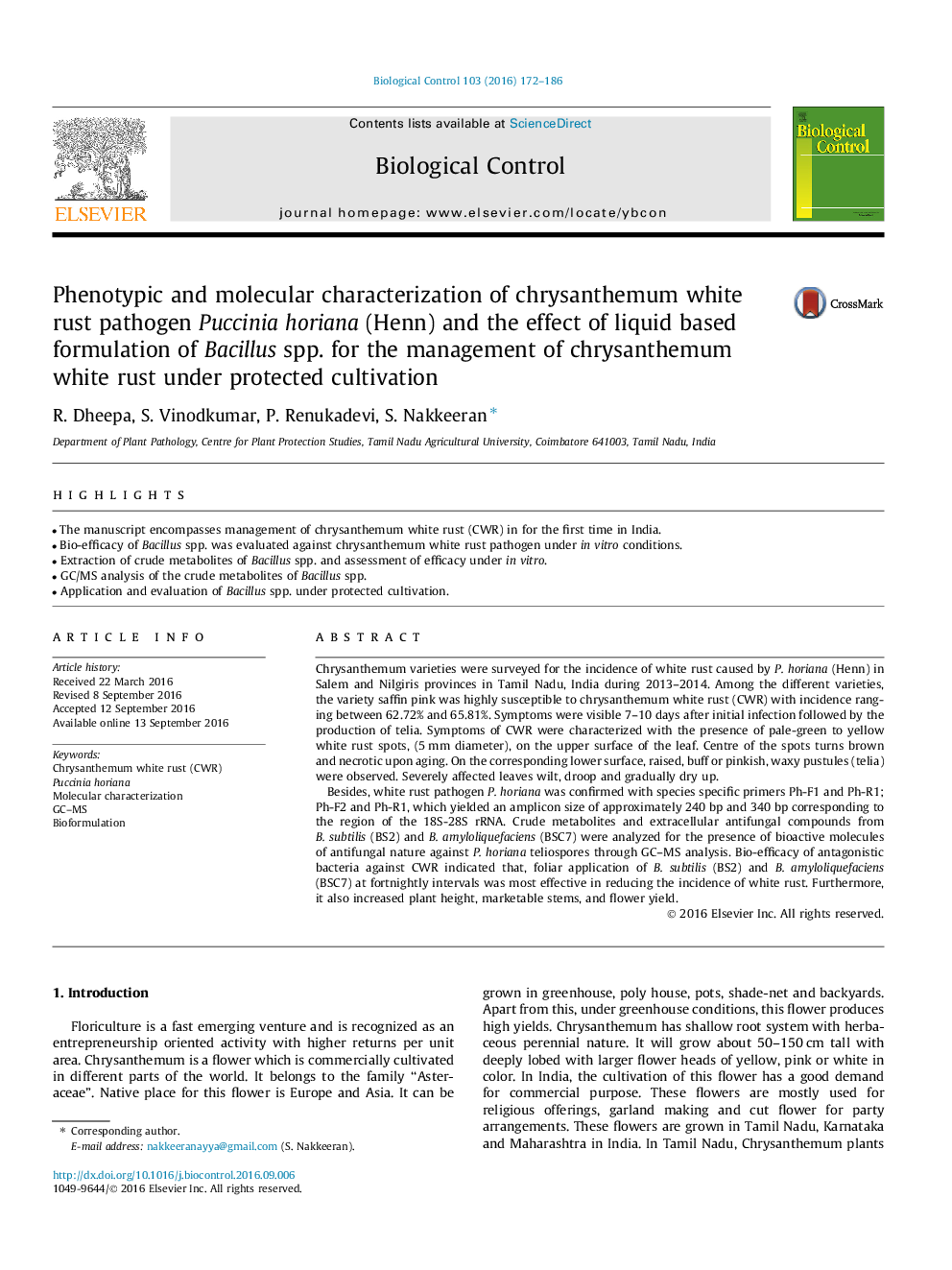| کد مقاله | کد نشریه | سال انتشار | مقاله انگلیسی | نسخه تمام متن |
|---|---|---|---|---|
| 4503548 | 1624231 | 2016 | 15 صفحه PDF | دانلود رایگان |

• The manuscript encompasses management of chrysanthemum white rust (CWR) in for the first time in India.
• Bio-efficacy of Bacillus spp. was evaluated against chrysanthemum white rust pathogen under in vitro conditions.
• Extraction of crude metabolites of Bacillus spp. and assessment of efficacy under in vitro.
• GC/MS analysis of the crude metabolites of Bacillus spp.
• Application and evaluation of Bacillus spp. under protected cultivation.
Chrysanthemum varieties were surveyed for the incidence of white rust caused by P. horiana (Henn) in Salem and Nilgiris provinces in Tamil Nadu, India during 2013–2014. Among the different varieties, the variety saffin pink was highly susceptible to chrysanthemum white rust (CWR) with incidence ranging between 62.72% and 65.81%. Symptoms were visible 7–10 days after initial infection followed by the production of telia. Symptoms of CWR were characterized with the presence of pale-green to yellow white rust spots, (5 mm diameter), on the upper surface of the leaf. Centre of the spots turns brown and necrotic upon aging. On the corresponding lower surface, raised, buff or pinkish, waxy pustules (telia) were observed. Severely affected leaves wilt, droop and gradually dry up.Besides, white rust pathogen P. horiana was confirmed with species specific primers Ph-F1 and Ph-R1; Ph-F2 and Ph-R1, which yielded an amplicon size of approximately 240 bp and 340 bp corresponding to the region of the 18S-28S rRNA. Crude metabolites and extracellular antifungal compounds from B. subtilis (BS2) and B. amyloliquefaciens (BSC7) were analyzed for the presence of bioactive molecules of antifungal nature against P. horiana teliospores through GC–MS analysis. Bio-efficacy of antagonistic bacteria against CWR indicated that, foliar application of B. subtilis (BS2) and B. amyloliquefaciens (BSC7) at fortnightly intervals was most effective in reducing the incidence of white rust. Furthermore, it also increased plant height, marketable stems, and flower yield.
Journal: Biological Control - Volume 103, December 2016, Pages 172–186